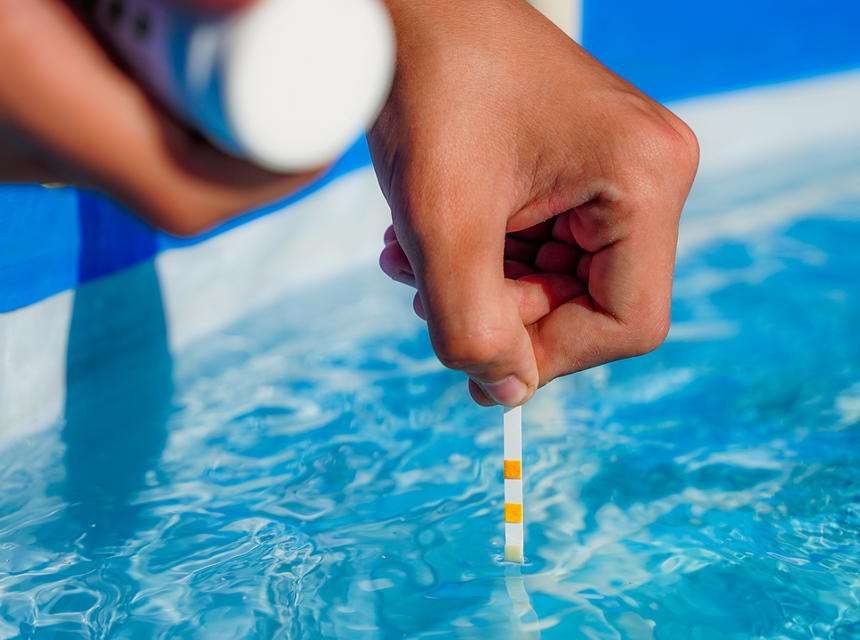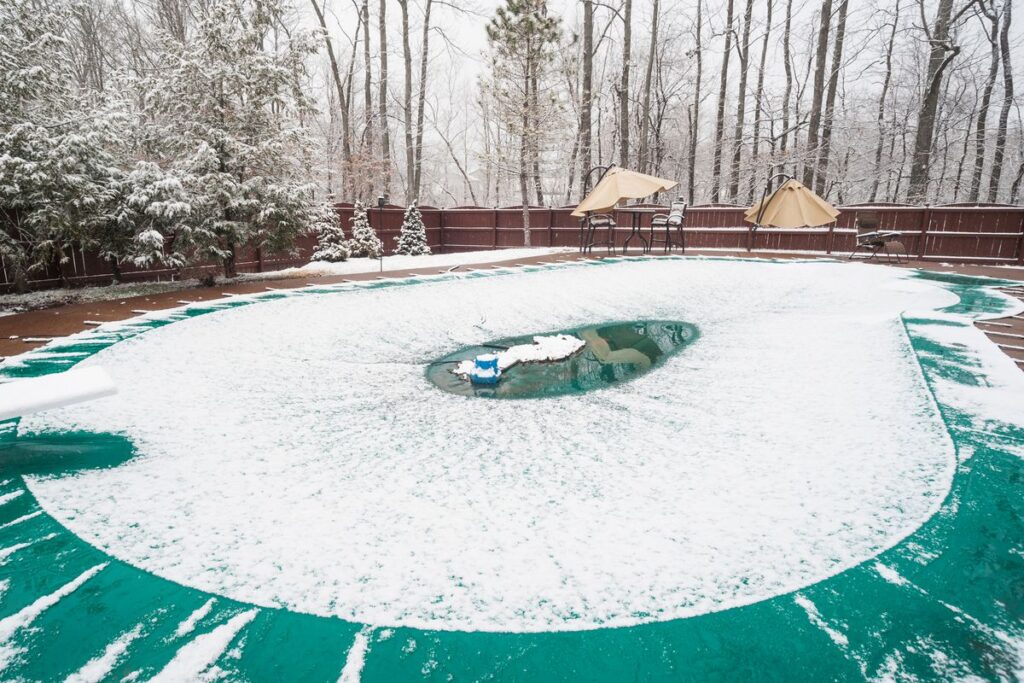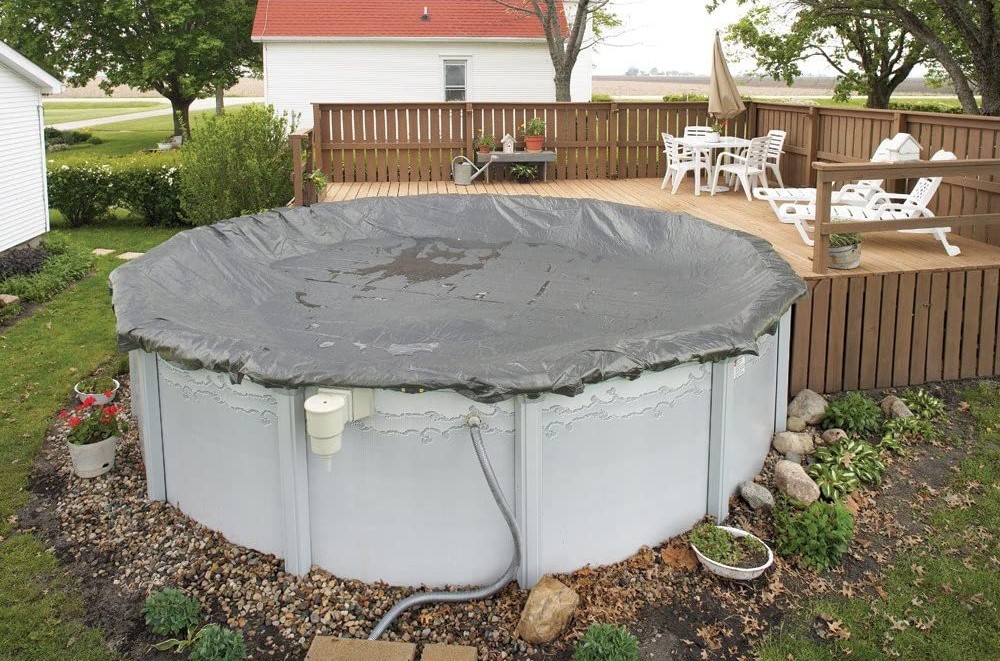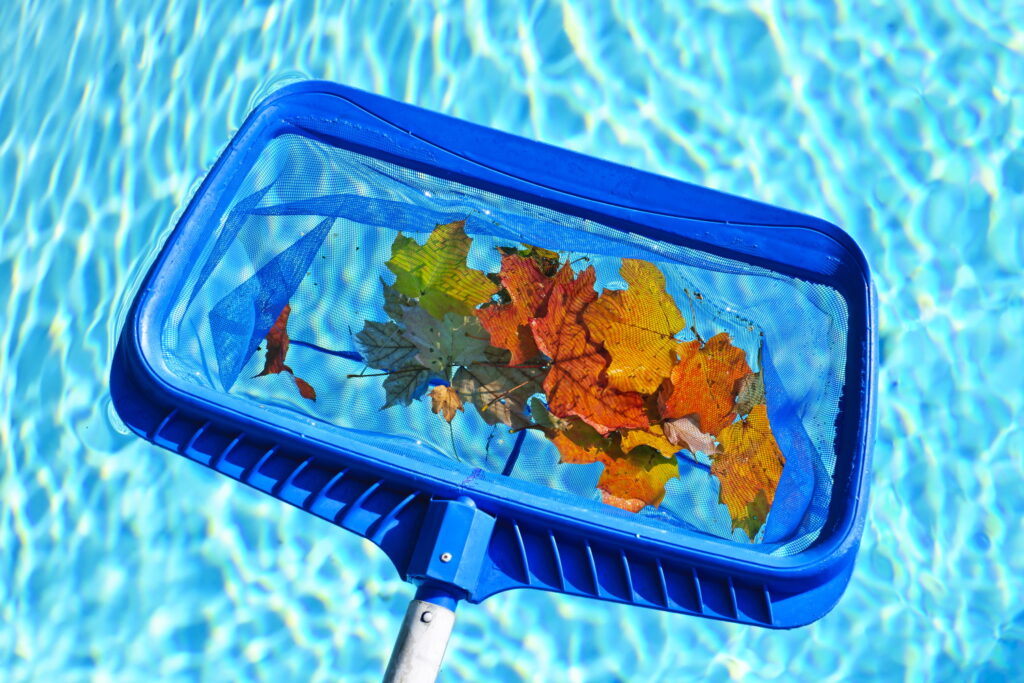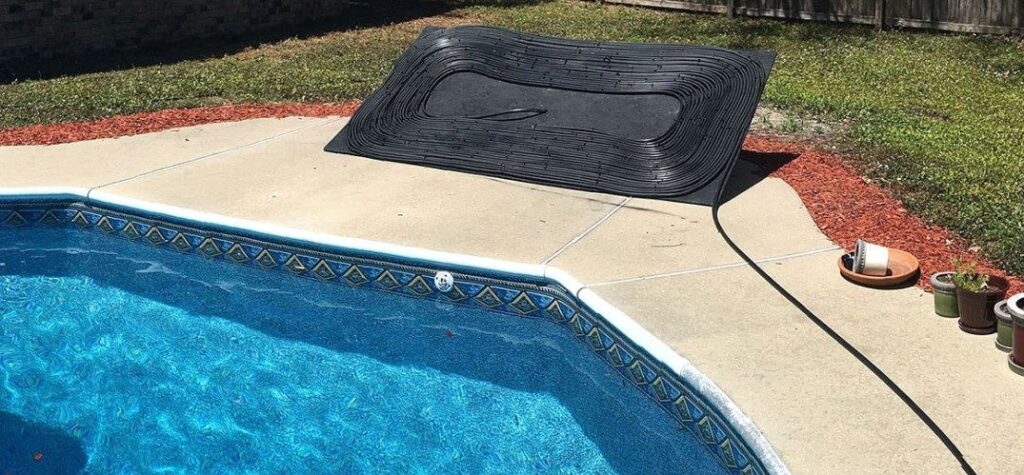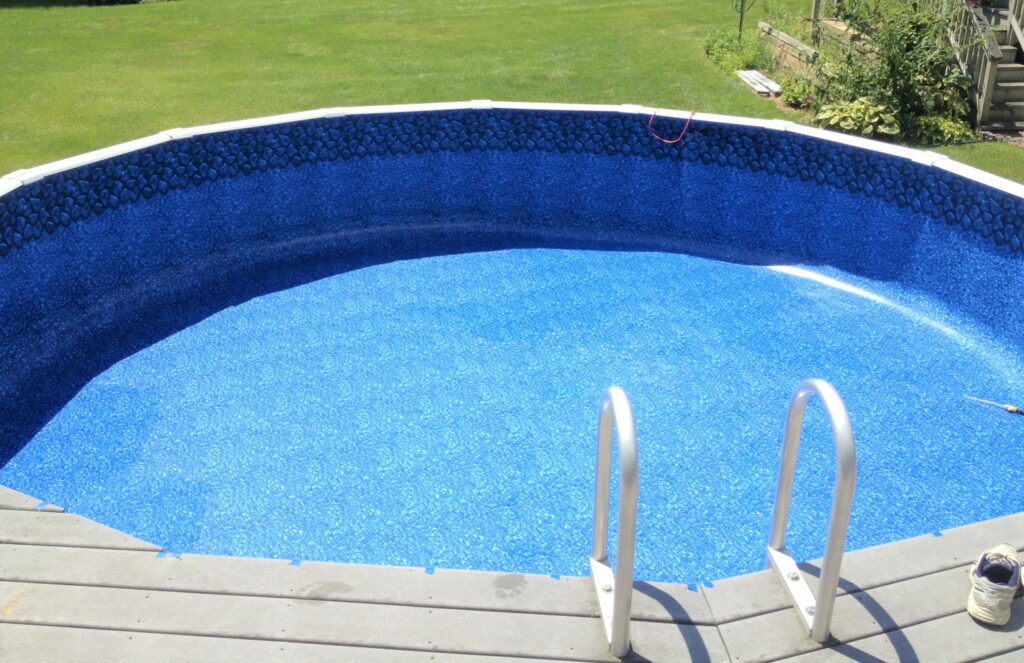There are several benefits of owning a swimming pool. One of the greatest advantages is that it can help you rejuvenate after a long day at work. A swimming pool can also help you keep up with your fitness routine, especially if you are a physical fitness enthusiast. Finally, this facility can hugely improve your backyard’s aesthetics.
However, the water can sometimes become cloudy and we all know cloudy water is unsightly. Additionally, cloudy water indicates a problem in your pool. Fortunately, there are several ways that you can use to clear this water. Here is a walkthrough on how to clear cloudy pool water fast and restore its sparkle.
Whether you have an inground or above-the-ground pool, you may have to deal with the cloudy water issue at some point. Although this problem is common, there is no definite answer to the question since there are several factors that can make your pool water cloudy. Therefore, it is important to identify the actual cause to determine the best way to fix it.
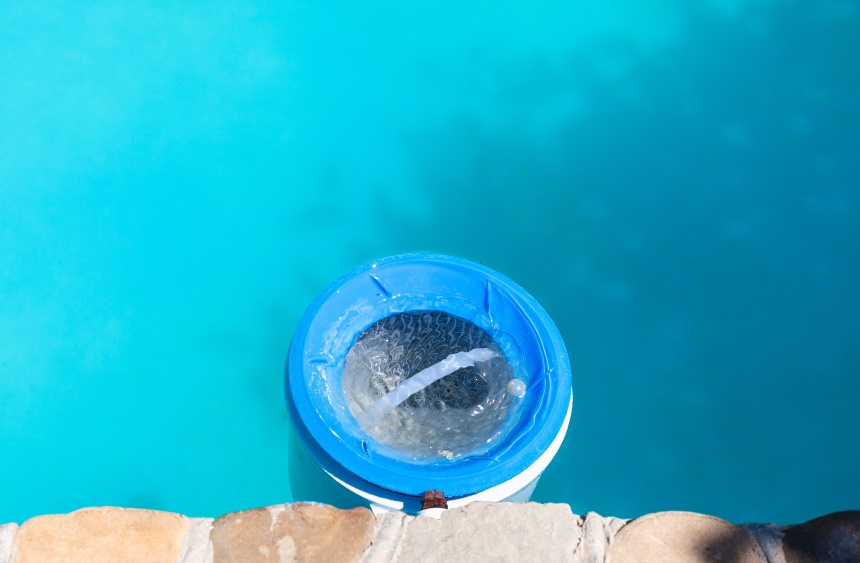
Often, insoluble particles, including dry leaves, dead insects, sticks, and human waste can find their way into your swimming pool and make the water cloudy. To prevent this issue, people often place a filter system at the pool’s surface to filter the particles.
Despite installing a pool filter system, you may still notice cloudiness in your water. This indicates that something may be wrong with your pool filter.
If you suspect a problem with your pool water filter, here are ways you can fix it.
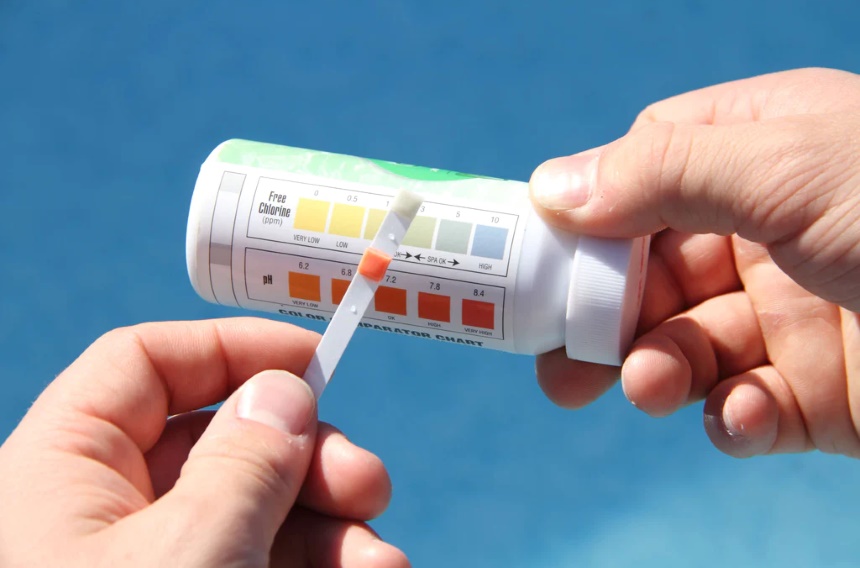
Proper chemical balance is necessary for swimming pool water to be clear. However, the chlorine level in your swimming pool can fluctuate and become too high or too low. There are several factors that can cause fluctuations in swimming pool water chlorine levels, including:
If the chlorine level in your swimming pool water is low, it becomes cloudy. Moreover, low chlorine levels cannot effectively kill bacteria and germs, making your water unsafe for swimming.
The following are ways to fix low chlorine levels in swimming pool water.
Test the amount of free chlorine available – Free chlorine refers to the amount of chlorine available to clean your swimming pool water. Use a liquid or strip test. If you don’t know how to carry out the test yourself, take a sample of the water to the nearest pool store. On average, the amount of free chlorine in swimming pool water should be between one to three parts per million (ppm).
Test the amount of cyanuric acid in the water and add it if necessary – A lot of sunlight will break down the chlorine available in your pool water. You are also likely to experience this issue during summer when the sun is too hot. However, adding cyanuric acid to the water will prevent the problem. Therefore, regularly test the amount of cyanuric acid available in the pool water and add it if necessary. According to experts, the cyanuric acid levels in your water should be between 30 to 50 ppm.
Calculate the combined chlorine levels – Combined chlorine level refers to the difference between total and free chlorine readings. The recommended chlorine level should be lower than 0.5 ppm. If the free chlorine level is less than the total chlorine available, your pool water will contain chloramines. Chloramines refer to a byproduct resulting from chlorine sanitizing your pool water. This byproduct can irritate your skin or even cause corrosion.
Use calcium hypochlorite to shock your pool – Shock your pool using calcium hypochlorite to increase the amount of free chlorine and get rid of chloramines from your pool water. According to experts, calcium hypochlorite should be the main ingredient in your pool water and should be between 60-80%. Shock your pool at least once a week during warmer seasons as people will be using the pool frequently. This way, you will prevent your water from becoming cloudy.
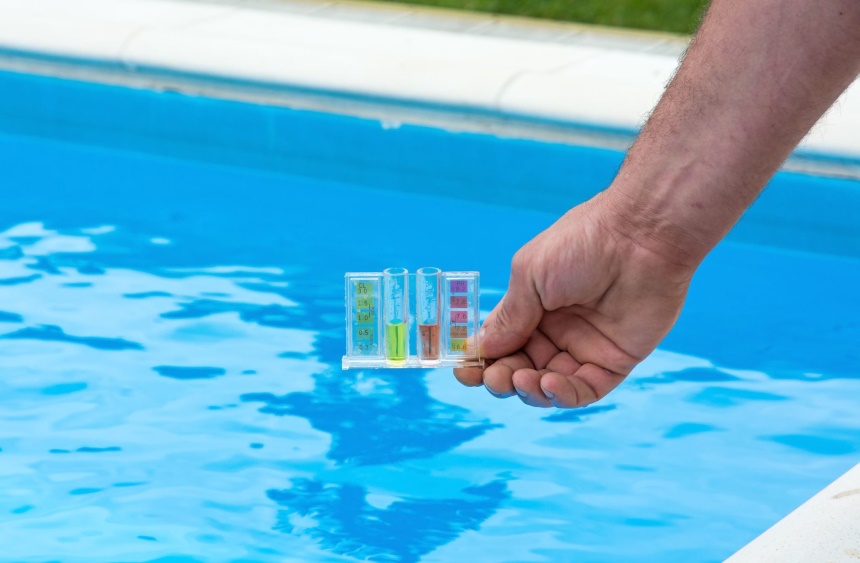
When it comes to water chemistry, you need to look at factors such as pH levels, calcium hardness, and alkalinity. Unbalanced water chemistry can make it difficult for chlorine to work and eliminate contaminants effectively. Additionally, unbalanced chemistry can make your pool water cloudy.
Here are the methods you can use to fix unbalanced water chemistry and clear cloudy pool water fast.
Test and balance your pH levels – Generally, your pool’s water needs to have a pH of between 7.4 to 7.6. Anything less than that is too acidic, while higher readings imply that the water is basic. Improper pH can affect chlorine effectiveness and other chemical components. For instance, high pH levels can encourage calcium build-up, making your swimming pool water cloudy. On the other hand, low pH levels can make chlorine become highly reactive and deplete quickly. As a result, it will not effectively sanitize your water, encouraging contaminants to build up. However, you can easily balance your swimming pool’s pH level. You can use a decreaser to lower high pH levels, while soda ash or a pH increaser can help you increase pH levels.
Test and balance the total alkalinity levels – According to pool experts, the appropriate alkalinity of your pool water should be between 100-150ppm. However, alkalinity of 125ppm is the most recommended. The pool water alkalinity level is essential because it assists in stabilizing pH levels. High alkalinity leads to scaling and high pH levels, making your water appear cloudy. For this reason, you should consider lowering swimming pool water alkalinity. Often, people use a pH reducer or muriatic acid to reduce alkalinity. If you want to raise alkalinity, use baking soda or an alkalinity increaser.
Test and balance the calcium hardness levels of your swimming pool water – When your swimming pool water contains high levels of calcium hardness, calcium scales will accumulate in your pool’s plumbing system resulting in cloudy water. If you discover that calcium hardness makes your pool water cloudy, consider diluting it. Before diluting the water, partially drain the pool and fill it with fresh water using a hose pipe. However, you should keep in mind that diluting the water also affects its general chemistry. Therefore, you need to test the water after diluting it to ensure all chemicals are properly balanced.
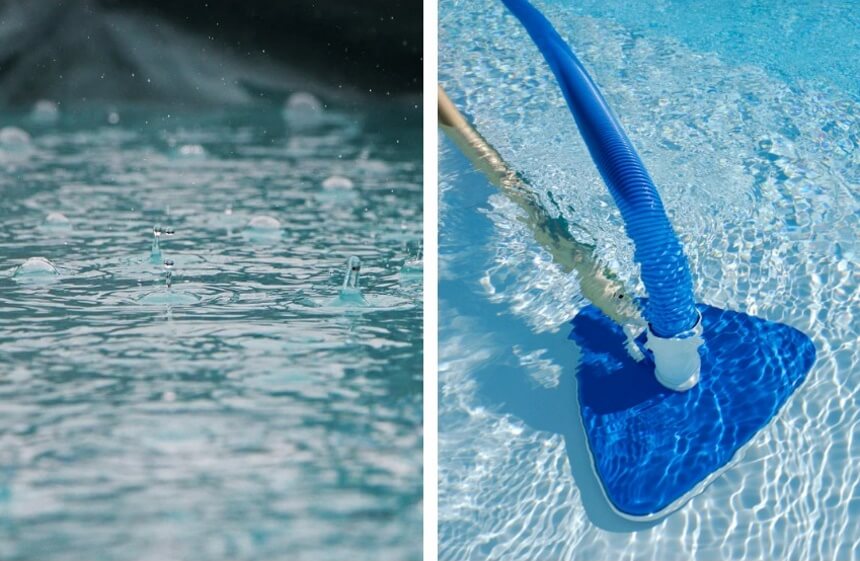
Another factor that can make your swimming pool water cloudy is contaminants. During rainy or windy weather, dirt particles such as dry leaves and pollen grains may find their way into your pool water. These particles can encourage algae growth if not removed on time, making your water appear cloudy. Rainwater can also wash various impurities into your swimming pool, contaminating the water.
You can easily deal with cloudy swimming pool water caused by external contaminants in the following ways.
Treat algae – If the algae growth in your swimming pool is visible, find a way to get rid of the growth before clearing the cloudy water. Most people often use an algaecide to kill algae. Unfortunately, this method is not effective. You can only use it as a preventive measure rather than treatment. To deal with this problem, skim, brush and vacuum your swimming pool. When brushing the pool, concentrate on the walls since algae tend to grow on swimming pool walls. Also, use the right brush to avoid damaging the swimming pool walls. During this process, ensure you bypass the filter. Afterward, shock your pool.
Test, balance, and clean your pool after heavy rainfall – Heavy rainfall can carry dirt particles into your swimming pool. Additionally, the rainwater can wash impurities into your pool or dilute the pool water. Therefore, ensure you clean your pool after a heavy downpour. Finally, test your swimming pool water to check whether all chemicals are balanced and adjust them accordingly.
Here is a step-by-step guide to help clear cloudy swimming pool water quickly.
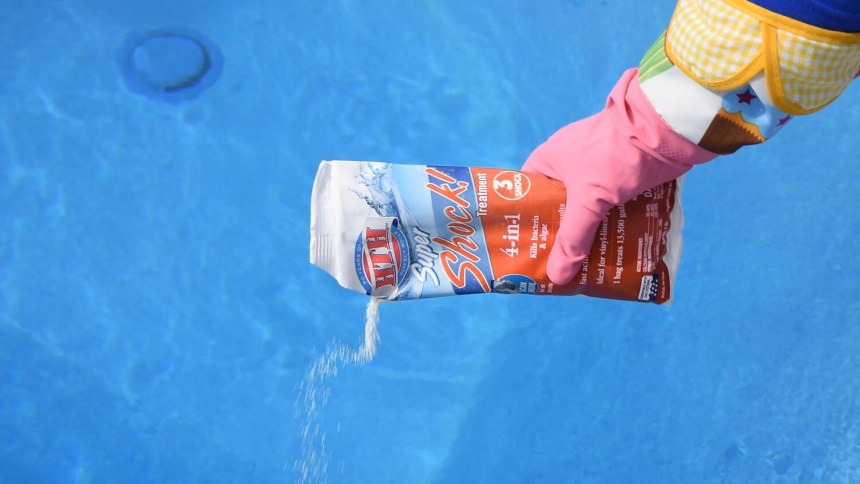
To clear cloudy water, people often shock their swimming pool water to regulate chlorine concentration. As a result, the level of free chlorine in the water will rise to 10 times more than the combined chlorine level discouraging algae growth. This level is often referred to as breakpoint chlorination. High chlorine concentration will also break down chloramines, eliminating odor.
However, this doesn’t mean that you should directly add chlorine to the water. Some of the substances that can help you regulate swimming pool chlorine levels include:
These products are available in various forms. You can check out the best pool chlorine tablets, but there are also liquid and powder ones available.
When shocking swimming pool water, you need to follow all instructions carefully. For instance, you should use one pound of the shocking substance for 10,000 gallons of water. However, you can use a double or triple amount depending on the amount or type of algae in your pool. Also, ensure you shock your swimming pool water at night. This way, you will prevent the sun rays from burning off the chlorine particles that haven’t fully dissolved, ensuring maximum effectiveness. After shocking the water, run your filter for at least eight hours.
Dirt particles can enter your swimming pool and make the water cloudy. Installing a filter will get rid of these particles ensuring your water remains clear always. To ensure the filter system eliminates these particles, run it for at least eight hours a day. If you live in a dusty region, or your water still appears cloudy after running the filter system for eight hours, run it longer.
Besides the filter system, you can use a skimmer to remove debris floating on water. There are several types of the best pool skimmers you can use to get rid of dirt. However, a skimmer only takes care of surface dirt, meaning the bottom part of the pool may still contain some dirt particles and only a vacuum can help with this.
After cleaning your swimming pool water, the next step should be balancing the chemical components. However, you’ll need to test the chemical level first using a test kit before balancing. There are several types of the best pool test kits that you can buy from your local store or online. Some of the chemical compositions that you need to test include alkalinity, pH level, and calcium hardness.
The recommended chemical balance for your swimming pool water should be as follows.
If the chemical levels seem to be higher or lower than the recommended amount, add the appropriate chemicals.
Although passing pool water through the filter system and vacuuming may help to remove dirt particles, your swimming pool may still contain tiny particles. This is because the filter system cannot trap tiny particles, allowing them to pass through. As a result, the water cannot become completely clear.
To ensure your swimming pool water becomes clear, consider using a clarifier. These substances collect all tiny particles together to form larger clumps, making it easier for the filter to catch them.
There are several advantages of using a clarifier. First, this solution can be the best when your water is not too cloudy. Additionally, a clarifier enables the pool filter to run effectively. Finally, you can use this substance whenever your pool needs a boost.
Nevertheless, this method has its downsides. One of the major disadvantages is that the substance takes a lot of time to clean your pool. On average, it takes about two to three days to clear your water. Another disadvantage is that you’ll need to clean your filter thoroughly since the clumps formed by the substance can clog the system.
After adding a clarifier to your swimming pool water, leave the filter running. This way, you will ensure the pH levels are balanced.
Besides a clarifier, you can consider using a flocculant. A clarifier and flocculant work in a similar manner. However, there is a slight difference. When it comes to a clarifier, the substance collects dirt particles into clumps, and they will float on the water. On the other hand, a flocculant allows the dirt clumps to sink to the bottom of the pool.
Using a flocculant offers several advantages. Other than its effectiveness, a flocculant is quite fast. Also, the solution collects dirt particles and keeps them together until you remove them. Therefore, you don’t have to worry about leftover chemicals contaminating your pool water.
If you use a flocculant, you will need to look for a way to remove the dirt particle clumps from your pool. This is because the clumps are too big, and the filter cannot remove them.
The best way to remove the dirt particles is through a manual vacuum. Using an automatic pool cleaner causes vigorous water movement, separating the clumps. As a result, the water will become cloudy again. You also need to be careful when using a manual vacuum since vigorous vacuuming can break the clumps.
Estimating the amount of time it takes for cloudy swimming pool water to become clear can be difficult, especially if you don’t know the exact cause. However, it shouldn’t take more than two to three days for the majority of the issues we’ve mentioned.
The method you use also determines how fast the water will clear. When you use a flocculant, you’ll need to wait about eight to 16 hours before dirt particles clump together and your water becomes clear. A clarifier, on the other hand, takes longer than a flocculant despite the fact that they work in a similar manner. If you use this substance, you’ll need to wait about two to three days before the water becomes clear. Finally, shocking takes 24 hours.
Identifying the factors that made the water cloudy before you take a dip is important. If the water is cloudy due to a faulty filter, the water is safe for swimming. However, it is not recommended since the water may contain bacteria that may affect your health.
If the issue is unbalanced chemicals, you should not use the swimming pool since the water will affect you. For instance, basic water doesn’t get rid of bacteria, while acidic water can irritate your skin.
When you shock your swimming pool water, you should not expect it to clear immediately. Generally, you need to wait for about 24 hours.
However, your water may still be cloudy after the 24 hours elapse. There are a few factors that can cause this scenario. First, if you purchase a shock that doesn’t have calcium hypochlorite, the water will not clear. Therefore, ensure you confirm the ingredients in a product before making any purchase.
Another factor that can prevent your water from clearing is poor water circulation. If you experience this issue, clean your pool filter system thoroughly.
We hope that our article has helped you to clear cloudy pool water fast. Although it may take some time and effort, it is well worth it to have a clean and sparkling pool that you and your family can enjoy all summer long!
